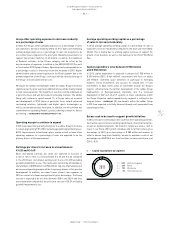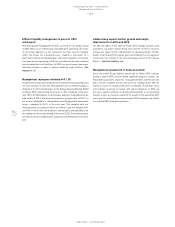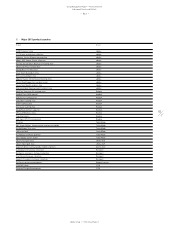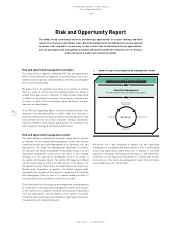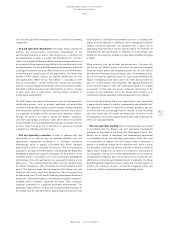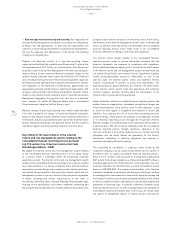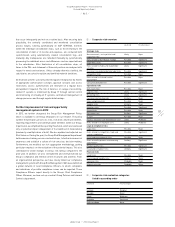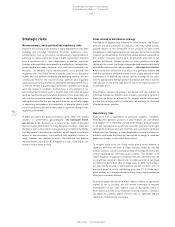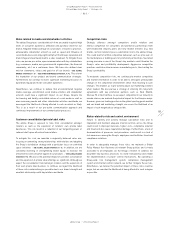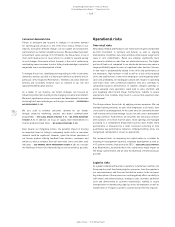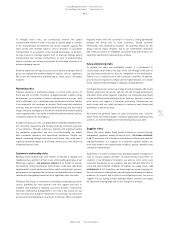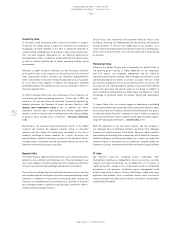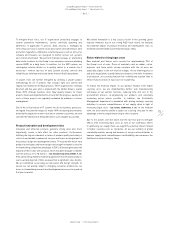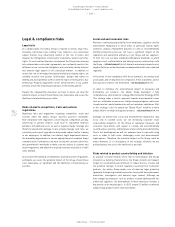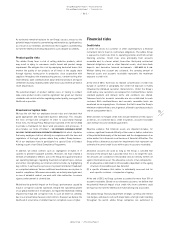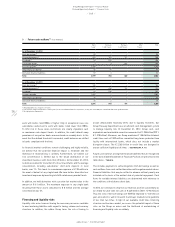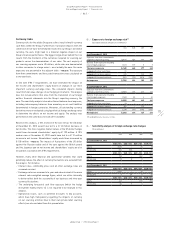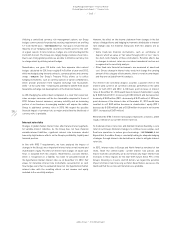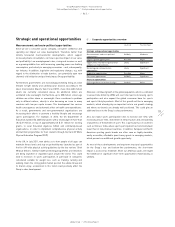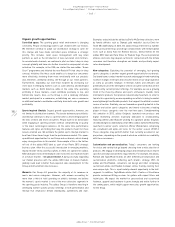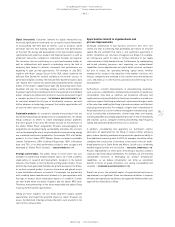Reebok 2012 Annual Report Download - page 193
Download and view the complete annual report
Please find page 193 of the 2012 Reebok annual report below. You can navigate through the pages in the report by either clicking on the pages listed below, or by using the keyword search tool below to find specific information within the annual report.
adidas Group
/
2012 Annual Report
Group Management Report – Financial Review
171
2012
/
03.5
/
Risk and Opportunity Report
/
Operational risks
To mitigate these risks, we continuously monitor the global
transportation market in order to be able to quickly adapt to changes
in the transportation environment and secure required capacity. We
work closely with multiple logistics service providers to guarantee
transportation of our products to the desired destinations. In addition,
we buy insurance coverage against theft or physical damage during
transportation and storage. Furthermore, in case of malfunctioning
logistics systems, we actively re-prioritise the allocation of products to
minimise damage caused.
Given the importance of logistics processes to ensure the proper flow of
goods, we evaluate the potential impact of logistics risks as significant.
We assess the likelihood of materialising as likely, due to our global
footprint.
Marketing risks
Flawless execution of marketing activities is critical to the success of
the Group and its brands. Therefore, unaligned product creation, range
development, go-to-market or brand communication processes could
lead to additional costs, suboptimal sales performance and the inability
to resonate with the consumer as desired. Poorly executed marketing
activities may also result in negative media coverage and hurt brand
image. Similarly, inadequate or insufficient investment in brand-building
could negatively affect our ability to maintain brand momentum and our
competitive edge in the marketplace.
In order to reduce such risks, our global and local marketing departments
are constantly cooperating and thereby ensuring consistent execution
of key initiatives. Through continuous planning and alignment within
the marketing organisation and also cross-functionally, we enable
both consumer relevance and operational excellence. Despite our
brands’ marketing strength and track record, these risks could have a
significant potential impact for the Group, and we assess the likelihood
of materialising as likely.
Customer relationship risks
Building strong relationships with retailers to become a valuable and
reliable business partner for them is one of the guiding principles of our
Wholesale segment
/
SEE WHOLESALE STRATEGY, P. 73. Failure to cement
and maintain strong relationships with retailers could have substantial
negative effects on our wholesale activities and thus the Group’s business
performance. Losing important customers in key markets due to subpar
relationship management would result in significant sales shortfalls.
Therefore, the Group is committed to delivering outstanding customer
service, providing our retail partners with the support and tools to
establish and maintain a mutually successful business relationship.
Customer relationship management is not only a key activity for our
sales force but also of highest importance to our Group’s top executives
and second-line management. As a result, the Group’s CEO, for example,
regularly meets with key customers to ensure a strong partnership
between the Group and its retail customers. Should customer
relationship risks materialise, however, the potential impact for the
Group could be major. However, due to our commitment, dedication
and continuous efforts to strengthen our partnerships with retailers, we
regard the likelihood of materialising as unlikely.
Sales and pricing risks
To achieve our sales and profitability targets, it is paramount to
successfully convert orders into sales, drive sell-through at the point of
sale and have product prices that are competitive in the marketplace.
Failure to do so would result in sales and profit shortfalls. In addition,
price increases required to compensate for higher product costs might
not be realised in the marketplace, leading to margin declines.
To mitigate these risks, we pursue a range of pricing strategies. We closely
monitor order book conversion, sell-out and sell-through performance
and adjust prices where required. In addition, our continuous investment
in brand-building and marketing helps us drive our business at various
price points and supports a premium positioning. Furthermore, we
work closely with our retail customers to minimise mark-downs and
potentially re-allocate product.
We believe the potential impact of sales and pricing risks could be
major. Given our brand strength, consumer appeal and surgical pricing
activities, we rate the likelihood of materialising only as possible.
Supplier risks
Almost the entire adidas Group product offering is sourced through
independent suppliers, mainly located in Asia
/
SEE GLOBAL OPERATIONS,
P. 100. To reduce the risk of business interruptions following the potential
underperformance of a supplier or a potential supplier default, we
work with vendors who demonstrate reliability, quality, innovation and
continuous improvement.
Furthermore, in order to minimise any potential negative consequences
such as product quality shortfalls, increased product lead times or
violation of our Workplace Standards, we enforce strict control and
inspection procedures at our suppliers and also demand adherence to
social and environmental standards throughout our supply chain
/
SEE
SUSTAINABILITY, P. 117. In addition, we have bought insurance coverage for
the risk of business interruptions caused by physical damage to supplier
premises. As a result, and in spite of our mitigating actions, we assess
supplier risks as having a major potential impact. However, we regard
the likelihood of being impacted to such a degree as unlikely.


